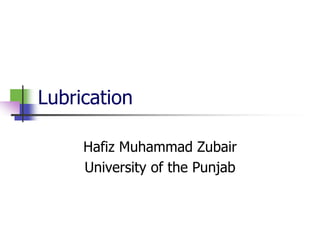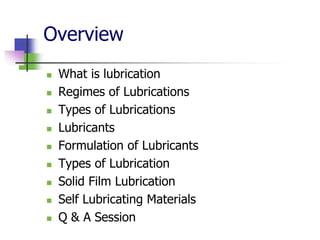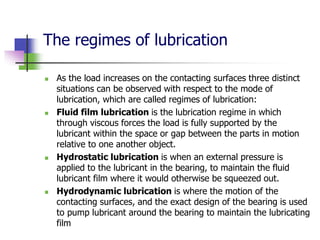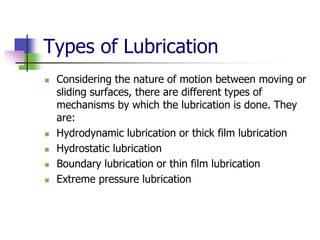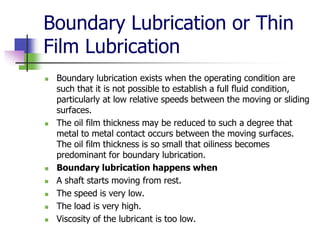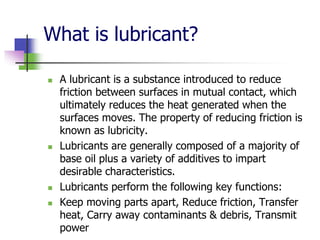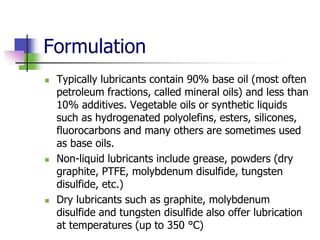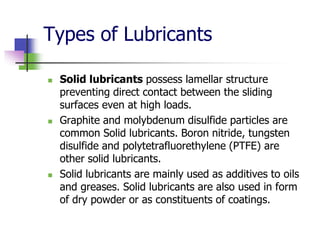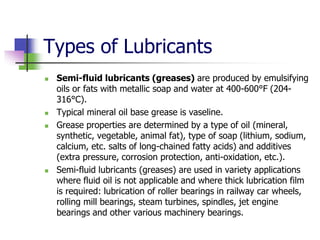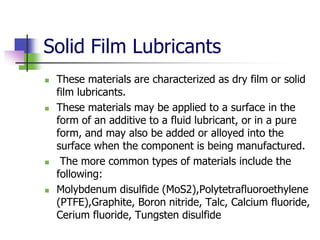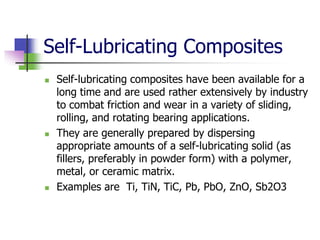This document provides an overview of lubrication. It defines lubrication as reducing wear between surfaces in contact by interposing a lubricant between them. There are three regimes of lubrication depending on the load: fluid film lubrication, hydrostatic lubrication, and hydrodynamic lubrication. The main types of lubrication are hydrodynamic lubrication, hydrostatic lubrication, boundary lubrication, and extreme pressure lubrication. Lubricants are typically composed of a base oil plus additives and perform functions like keeping parts apart and transferring heat. Common lubricants include oils, greases, and solid lubricants like graphite and molybdenum disulfide. The document discusses lubricant formulation, properties, types, and
